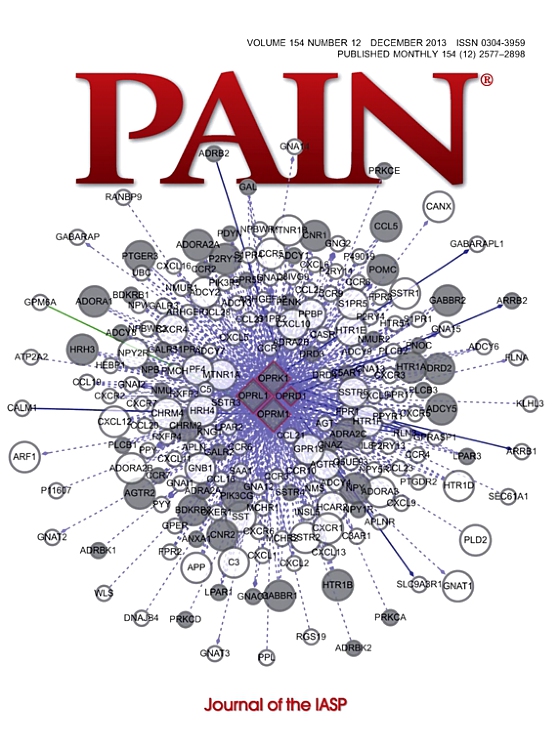Mortality among patients with long-term prescription opioid use in Norway: a nationwide registry-based cohort study.
IF 5.9
1区 医学
Q1 ANESTHESIOLOGY
引用次数: 0
Abstract
The aim was to estimate all-cause and cause-specific mortality in long-term prescription opioid users compared to the general population. This nationwide registry-based cohort study used data of patients aged 15 to 69 years with no previous cancer diagnosis and a recorded episode of long-term opioid analgesics use (anatomical therapeutic chemical [ATC] group N02A; N = 116,006) in Norway between 2011 and 2019. Sex-specific crude mortality rates (CMR) and age-standardized mortality ratios (SMRs) were calculated for all-cause and cause-specific mortality, ie, natural and unnatural causes for the whole study population and for different age groups (15-34, 35-54, and 55-69 years). Overall, 4.6% (2491/54,535) of men and 2.7% (1680/61,471) of women died during the follow-up period. Crude mortality rates for all-cause mortality were 1194 and 724 deaths per 100,000 person-years (PY) in men and women, respectively. Men had higher CMRs across all causes, particularly unnatural causes (221 and 101 deaths per 100,000 PY in men and women, respectively). Patients with long-term opioid use had a 4 times higher all-cause mortality (SMR = 3.8 [95% CI = 3.6-3.9] in men and 3.7 [3.5-3.9] in women aged 15-69 years) compared to the general Norwegian population of the same age. Excess mortality was observed across all causes, particularly suicide, accidents, and accidental poisoning. Standardized mortality ratios decreased with age and were highest for the youngest age group (15-34 years), particularly among men. Long-term prescription opioid use is associated with an increased risk of death. Clinicians should weigh the risks of long-term opioid use against the benefits.挪威长期处方阿片类药物使用患者的死亡率:一项基于全国登记的队列研究。
目的是估计与一般人群相比,长期处方阿片类药物使用者的全因死亡率和病因特异性死亡率。这项全国范围内基于登记的队列研究使用了年龄在15至69岁之间、既往无癌症诊断且有长期阿片类镇痛药使用记录的患者的数据(解剖治疗化学[ATC]组N02A;N = 116,006)。计算性别特异性粗死亡率(CMR)和年龄标准化死亡率(SMRs),包括全因死亡率和原因特异性死亡率,即整个研究人群和不同年龄组(15-34岁、35-54岁和55-69岁)的自然原因和非自然原因。总体而言,4.6%(2491/54,535)的男性和2.7%(1680/61,471)的女性在随访期间死亡。男性和女性全因死亡率的粗死亡率分别为每10万人年1194人和724人。在所有原因中,特别是非自然原因中,男性的cmr较高(男性和女性分别为每100 000日元221人和101人死亡)。长期使用阿片类药物的患者的全因死亡率是同龄挪威普通人群的4倍(男性SMR = 3.8 [95% CI = 3.6-3.9], 15-69岁女性SMR = 3.7[3.5-3.9])。在所有原因中都观察到过高的死亡率,特别是自杀、事故和意外中毒。标准化死亡率随着年龄的增长而下降,最年轻年龄组(15-34岁)的死亡率最高,尤其是男性。长期处方阿片类药物使用与死亡风险增加有关。临床医生应该权衡长期使用阿片类药物的风险和益处。
本文章由计算机程序翻译,如有差异,请以英文原文为准。
求助全文
约1分钟内获得全文
求助全文
来源期刊

PAIN®
医学-临床神经学
CiteScore
12.50
自引率
8.10%
发文量
242
审稿时长
9 months
期刊介绍:
PAIN® is the official publication of the International Association for the Study of Pain and publishes original research on the nature,mechanisms and treatment of pain.PAIN® provides a forum for the dissemination of research in the basic and clinical sciences of multidisciplinary interest.
 求助内容:
求助内容: 应助结果提醒方式:
应助结果提醒方式:


